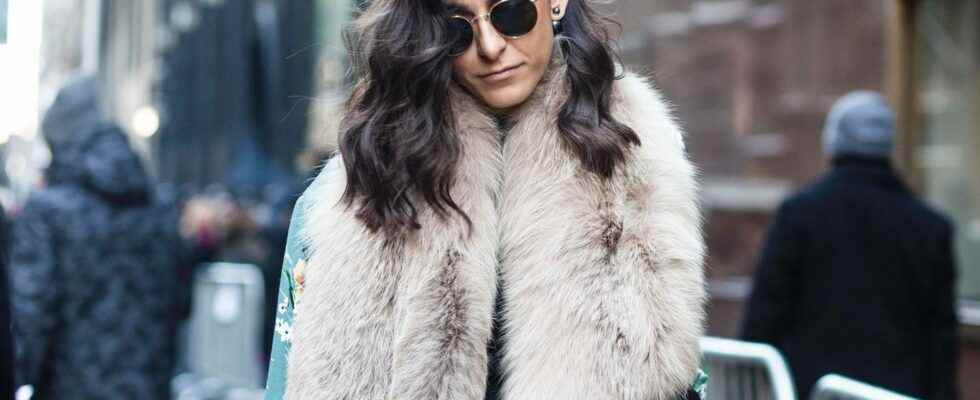Fake fur vs fur
How do you recognize real fur? The breath test shows it!
© Catwalkpictures
Fake fur is in! This is good for fashion and for the animals. But can you tell real from fake fur? And are the manufacturers always honest?
Real fur has been a status symbol since the Stone Age. In some places this is still the case today. But this is increasingly being questioned. It’s aesthetic, enhances any outfit, is natural and keeps you warm very well, but we’re not in a situation where we have to wear it.
Wearing fur doesn’t always go down well – designers know that too. Fake fur has long since become an alternative. The optics are pretty good and the warming properties are also there. And the mocking word “teddy fur” has all but disappeared from fashion vocabulary. But how can we distinguish real from fake fur? And do the manufacturers and designers always take it so seriously when it comes to labeling the materials used? We clarify!
How do I check if it’s faux fur or real fur?
The price is often no longer an indication today. Well-made faux fur is expensive, especially when it comes to designer pieces. However, there are a few noticeable differences: while real fur blows like our own hair even in a light wind, faux fur remains quite stable. Under the hair it becomes clearer: fur is on the skin of the animal, faux fur on fabric. But even that is sometimes difficult to see. So if you want to be 100% sure, the only option is the burn test – but please only on plucked fibers! Animal hair smells like horn after burning, just like human hair. Synthetic fibers smell like plastic. They melt into tiny balls at the tip.
The breath test: Another way to identify real fur is the breath test. Because real hair is more flexible than synthetic hair. So if you just blow the hair very lightly (!), real hair will already move. With faux fur, on the other hand, nothing would move.
How and from what is faux fur made?
The so-called artificial or woven fur is usually made of cotton, polyester and polyacrylic fibers. Polyacrylic fibers are woven into the base fabric made of a cotton-polyester mix and an adhesive prevents them from falling out again. The Düsseldorf label inauthentic the designer Bärbel Zech creates faux fur scarves that look deceptively real: “We often use special fibers from Japan to get a particularly nice feel. A lot of work steps are necessary to dye the hair, for example.” Often the roots of the hair should be light and the tips should be dark. Sometimes even three colors. “And it helps if they’re different lengths, like real fur.” Then even a furrier finds it difficult to distinguish between the original and the fake.
What are the advantages of fake fur over real fur?
For a short coat you need the skins of eight foxes, 25 mink or 34 rabbits. Not a single one for a faux fur coat. Real fur must be treated with chemicals before processing. According to a study by the independent Dutch research and development institute CE Delft, a real fur coat also has a significantly worse environmental balance than a comparable faux fur coat. From the breeding of the animals to the processing of their skins, around 300 kg of CO2 are released – to the finished faux fur coat, it’s around 50 kg of CO2. And what is also very practical: faux fur is lighter and easier to clean, sometimes even in the Washing machineand unlike animal fur, does not start to smell when wet.
Can we trust the manufacturer’s information on the label?
Unfortunately, no! Stiftung Warentest recently found this out by examining five furs labeled as fake fur in the laboratory. These were actually anything but fake. When the suppliers were asked directly which types of fur they use, Stiftung Warentest received no answer in 17 out of 23 cases – not even from well-known brands such as Burberry and Fendi.
What else is there to say about fur appliques?
The majority of real fur is currently not offered in the form of complete jackets or coats, but as fashionable details and appliqués on collars, hoods and trimmings. Or as a hat bobble. As the investigations by Stiftung Warentest show, manufacturers in particular must become more transparent and honest in labeling the materials used. It’s easy to say that consumers have the power. However, if they don’t even know what they are actually buying because it says “fake” on it and “genuine” is inside, then the customer cannot search specifically for a fake fur variant.
